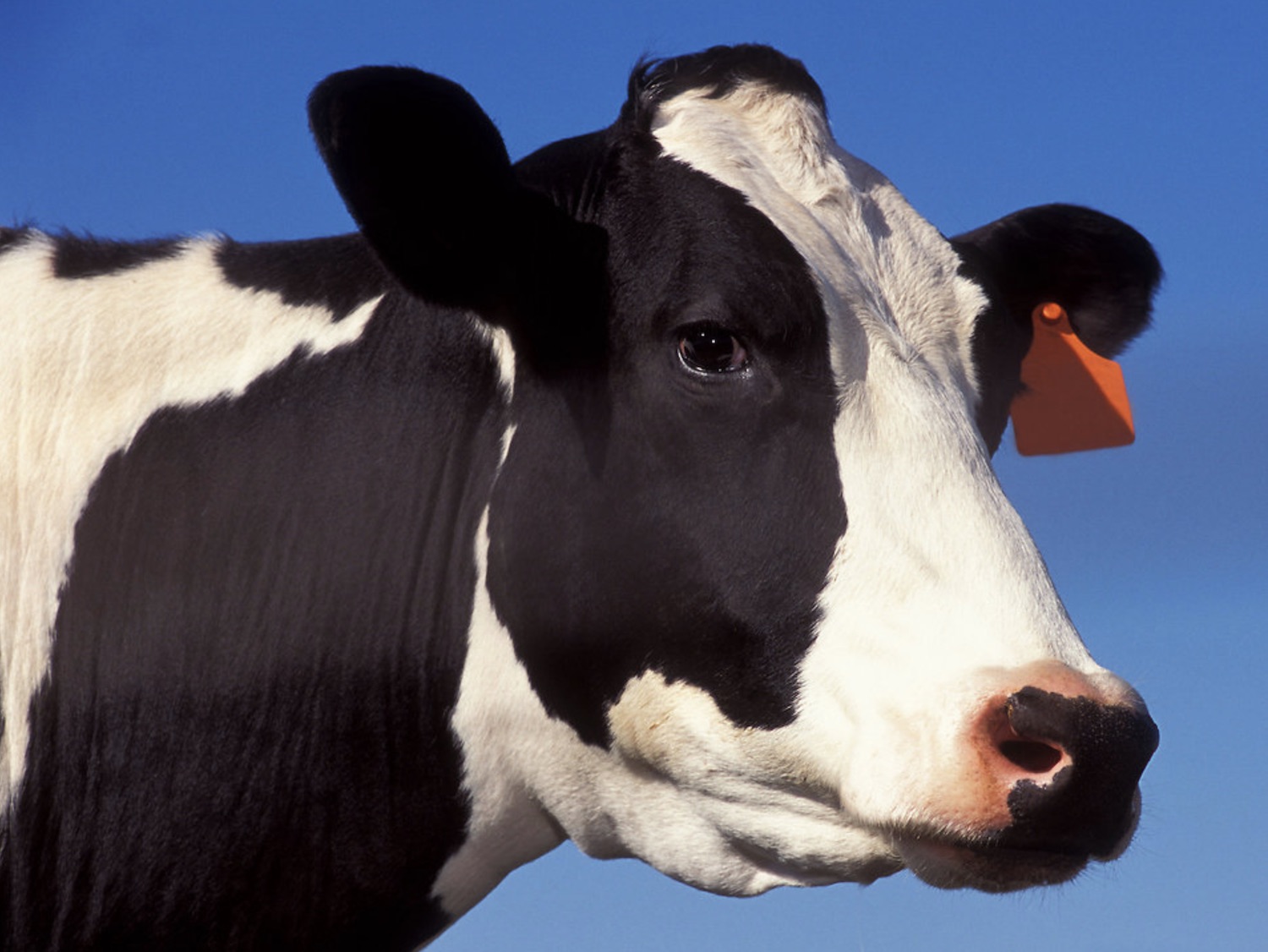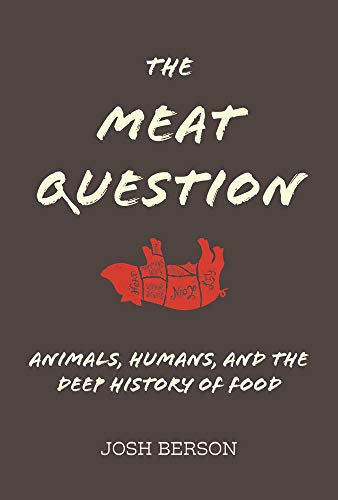The Future of Meat
As people become aware of the effects of eating animals on climate change and human health, a new book asks whether we will see an end to it. Free Stock Pictures
Free Stock Pictures
“The Meat Question: Animals, Humans, and the Deep History of Food”
A book by Josh Berson
In the movie “My Big Fat Greek Wedding,” Aunt Voula, played by Andrea Martin, learns that her niece’s fiance is a vegetarian. She says, “He don’t eat no meat?…WHAT DO YOU MEAN HE DON’T EAT NO MEAT? Oh, that’s OK, that’s OK, I make lamb!”
It’s funny—or is it? For those of us who eschew consuming animals and their byproducts, it’s hard to understand why most people today still enjoy eating flesh, seeing meat as “something” rather than “someone.” In “The Meat Question: Animals, Humans, and the Deep History of Food,” Josh Berson digs deep, literally, going back to the earliest times of human existence to find out when and how and why our relationship with animals as food began. The book considers three questions: 1) Did meat make us human? 2) Is growing affluence the cause of increased meat consumption? and 3) Will we see the end of meat?
As a vegan for 31 years and vegetarian for even longer, I rejoice with every new study or book published on the devasting impact that eating animals has on our health, quality of life and longevity. With hundreds and hundreds of scientific references, surely, I think, people will reduce or eliminate their meat consumption in order to reduce their risk of chronic disease. So many people have shared their stories in films, books and websites on how they reversed their heart disease or diabetes, achieved a normal weight, and regained their lives, by discovering a healthy, plant-based diet.
And yet, the consumption of animal flesh and animal byproducts continues to rise. The world population is projected to reach 9.6 billion by 2050 and people will be devouring more meat than ever before. There is no longer enough land mass on Earth to allow livestock to graze freely before slaughter. Today, the CAFO (concentrated animal feeding operation, AKA the factory farm) is the answer, but for the individual animals being raised in a CAFO for food, it is hell on earth.
What about the environment? As stinking lagoons of untreated livestock excrement are piled higher and deeper, surely we would realize our folly of raising tens of billions of animals for food. But no, it seems no amount of air and water pollution, greenhouse gas emissions, rainforest destruction, aquifer depletion, soil exhaustion, species extinction, etc. can curtail our desire for consuming flesh.
Click here to read long excerpts from “The Meat Question” at Google Books.
I have waited for decades for the discussion on climate change to heat up, for it to be considered for regulation in government policy and for it to headline mainstream news on a regular basis. Are we there yet? The late Robert Goodland, lead environmental adviser at the World Bank Group, wrote passionately and profusely about climate change and how we could all, simply and easily, prevent our demise by choosing plants instead of animals for food. Mitigating global warming by changing our diet was his plea, because it would buy us time to transition our factories and modes of transportation to sustainable energy sources.
Was his message heard? Do we have the capacity to hear this message?
Berson acknowledges the devastating impact on health, environment and animals due to meat consumption very briefly, early in his book’s prologue. He writes as if we all know this information already, no need to elaborate in detail—although he does paint the nightmarish image of current reality, transporting cattle from Australia to China by air! We use all our best inventions, concentrating cattle into airplanes to satisfy the gluttonous desire for flesh while making a nice profit. Is no thought made of the reckless use of energy resources or abundant release of greenhouse gas emissions in this scenario? We have created our own “little shop of horrors” at home on Earth, responding to the escalating cry, “Feed Me!”
Are we who we are—are we human—because we eat meat? To address the first question, Berson presents to us a dry and academic history of humankind. This is not easy reading. As we travel to periods 1 million to 5 million years ago, the text is riddled with archeological terms that even an above-average reader would not be familiar with. It takes patience to comprehend it all, moving back and forth through ancient and unfamiliar times.
Berson explains that our evolutionary history was a result of our diet versatility—being able to find and consume a variety of plant and animal-based foods, available in different periods and locations. Berson addresses the tenuous relationship between the consumption of meat and the evolution of human brains:
“Where do we get the energy to run our big brains? Over the past twenty-five years, this has been a key question in evolutionary anthropology. For many observers, our expensive brains represent exhibit A in the case for meat’s role in human evolution. Meat, the argument goes, supported encephalization [the evolution of large brains]… [But] the brain can’t do much with the energy in meat. The brain relies on glucose as its primary fuel… the energy in the lean meat of wild ungulates is mainly in the form of protein. The body has a limited capacity to convert amino acids into sugars. Protein does not represent a sustainable source of energy for the maintenance of nervous tissue.”
Berson goes on to explain that energy is not the sole expense of the human brain, which is 50% to 60% lipid by dry mass. DHA (omega-3 docosahexaenoic acid) is vital in supporting the high lipid content of our brains. DHA can be hard to find in human diets—its primary direct source is aquatic foods. It can, however, be synthesized from alpha-linolenic acid (LNA). “[C]linical evidence indicates dietary LNA represents a more-than-adequate source of DHA for the growth and maintenance of the central nervous system,” Berson writes. “Where are the terrestrial dietary sources of alpha-linolenic acid? It’s highly concentrated in chloroplast membranes, so leafy green plants represent a strong source, as do mosses, the fatty tissue of herbivores that consume these things, and the usual range of oilseeds, including flax, hemp, and walnuts.”
He concludes, “Meat may well have played a role in buffering the vagaries of access to a higher-quality diet in early humans. But it wasn’t because it was essential to brain development.” Nor is meat essential to how we eat in the future.
Later in the book, we arrive in the present day. Here, we can scrutinize our history more carefully as the abundance of evidence improves resolution. Question 2 is addressed: Is growing affluence the cause of increased meat consumption? To balance Western influence dominating the telling of human history, Berson writes, “I offer an Asia-Pacific perspective on the modern meat economy. My aim is to nudge the food systems literature away from the North Atlantic and toward those parts of the world whose tastes, expertise, and climate will dominate global patterns of change in diet over the next two or three generations.” We learn that affluence alone does not drive the demand for meat. Rather a complicated economic and political system has been created that forces those disempowered, impoverished individuals to choose the convenience of “cheap” meat because they have no access to affordable alternatives.
Berson writes, “Until we recognize that marginalized humans and animals raised under industrial conditions occupy coordinate roles in a single system of economic violence, we will make no progress unworking meat’s power.”
In the epilogue we learn that Berson has been a vegetarian for 25 years and a vegan for 19, except for a “handful of exceptions.” He admits his original motivation was unclear but over time it was about reducing his footprint: “I wanted to limit my claim on the Earth’s resources to levels that would allow the largest number of people to enjoy the quality of life that I took for granted.” He began to question his reasons for being vegan after about a decade, which became the motivation for this book. The dispassionate tone throughout is intentional; Berson desired to present information as objectively as possible, without judgment that might alienate the reader.
Will we ever see the end of meat? The author believes if humanity survives, it’s possible that few if any animals will be on our plate. After reading “The Meat Question,” I have a better understanding of why it is not effective to use single issue arguments like health, environment, climate change and animal cruelty to convince people to reduce or eliminate their animal consumption:
“To imagine a world in which humans no longer get any part of their subsistence from animals is to imagine a world where the bond of economic necessity, of precariousness, between humans and animals has been succeeded by a bond of mutual regard, among humans and on the part of humans for other living things. This is a more radical vision than that which underlies arguments for the cessation of meat eating on grounds of health, or carbon footprint, or animal sentience.”
Berson shows us how to think about eating animals in broader terms. Gambling on food prices with agricultural derivatives and investing in agricultural land acquisitions negatively impact the access to adequate food. Meat consumption is one piece of a complex and violent capitalist system.
There was one question I couldn’t help but ask myself while reading “The Meat Question”: Are humans naturally violent? Berson concludes with this question as well, asking “whether human beings are fundamentally cruel, condemned to reduce one another to lumps of meat.” He acknowledges that if we don’t want to accept systemic violence as our reality, a divergence will be required, “in diet among other things, as radical as any we have experienced before.”
Your support matters…Independent journalism is under threat and overshadowed by heavily funded mainstream media.
You can help level the playing field. Become a member.
Your tax-deductible contribution keeps us digging beneath the headlines to give you thought-provoking, investigative reporting and analysis that unearths what's really happening- without compromise.
Give today to support our courageous, independent journalists.







You need to be a supporter to comment.
There are currently no responses to this article.
Be the first to respond.